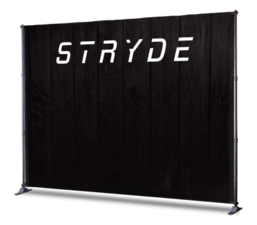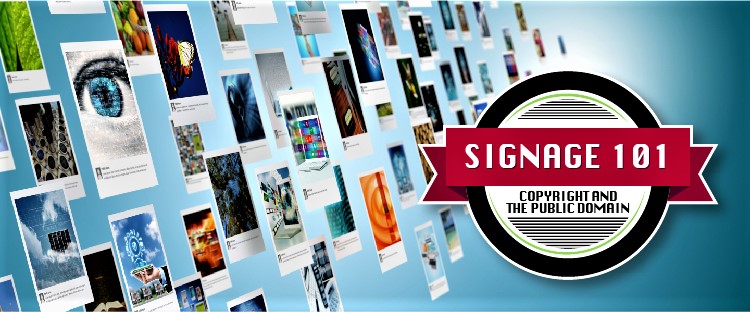Your store is making plans for its annual Halloween sale and you think using a picture of Pennywise the evil clown from the It movie would be perfect, right? Or maybe your daughter is a big fan of Marvel’s Avengers and she wants a Black Widow face mask or gaiter – why not just digitize that image of Black Widow you spotted at the local comic book store and send it along to Signs.com?
In both cases, the correct answer is “no,” and you should re-think your image choices. Both of these characters are copyrighted and the owners of these characters don’t take kindly to anyone – even your daughter – freely taking advantage of their copyrighted characters. Of course, depending upon your bank balance, they’d certainly welcome a licensing discussion!
In addition, print and custom signage providers – such as those of us at Signs.com – also have to be aware of images that might be, shall we say, not on the up and up. As we state on our website, “You warrant that your products do not infringe upon any rights of any third party, including copyright…and that you have all required rights or permissions necessary to incorporate third-party material into your products.”
Copyright Basics
So here are a few of the basics you need to know about images when it comes to using them for signage (or just about any other purpose):
● First, generally, if you didn’t create the image – that is, you did not draw, photograph, or otherwise craft it from scratch – you don’t have the right to use it, repurpose it, or copy it. Rather, the rights to that image are owned by the image’s creator (or the creator’s estate/heirs).
● Copyright exists from the moment of the image’s creation – there’s no need for the creator or author to actually publish the image, officially register a copyright with the U.S. Copyright Office, nor affix the standard copyright symbol (although there are benefits to doing the latter, including advantages should litigation occur). So, just because you don’t see a copyright symbol on an image does not mean it’s fair game to use or copy.
● Public domain: If an image is not protected by copyright, it resides in the public domain. As a result, you’re free to use the image as you see fit, for any purpose.
● For images created on January 1, 1978 or later, the term of copyright is the life of the image’s creator (aka “author”) plus 70 years after his or her death. But be aware that copyright duration is different for older images: For images created and published between 1964-1978, copyright duration is 95 years from date of creation; and for those images published between 1923-1963, it’s 28 years from date of creation (but 95 years if the copyright was renewed).
● Images published before 1925 are now typically in the public domain, and more will now fall into the public domain every January. In 2024, for instance, Disney will lose copyright over Steamboat Willie, the original depiction of Mickey Mouse; about 10 years later, Superman will follow, and so on (assuming there are no more changes to the copyright laws here in the U.S.).
● In the meantime, however, just because you see/find an image on the internet does not mean it’s in the public domain (an all-too-common fallacy).
● Also, buying a photograph or a painting does not give you any rights to reproduce that image. Although, if you’re buying an original painting, for instance, you can make a deal with the artist to include some or all of the reproduction rights to that painting – but expect to pay more!
● Licensing: Licensing is the process of giving someone limited access to something you own under a predefined set of limitations. Only the copyright holder can enter into a licensing agreement.
Finding Images
Ok, so by now you should understand this most basic rule of image use — only use an image for signage or any other application if:
- You created the image, or;
- The image is in the public domain or commons (see below), or;
- You have purchased or otherwise acquired rights to the image.
So, where do you find images you can use for your signage and other marketing materials? We suggest these primary options:
● Signs.com – You may not realize it, but we offer stock images for your next signage project. These images are accessible via our design tool (under the Art icon on the left-hand side of the page). There, you can search through an impressive library of stunning stock photography images that can be used with your design; the fee is just $5.99 per image. We also offer free clip art.
● Public-domain sites and “commons” sites – These are sites that have assembled images that now reside in the public domain because their copyright term has expired, or images that their creators/owners have assigned to the public domain or where images are under an alternative license. Three such places are:
Wikimedia Commons: nearly 70 million freely usable media files (images as well as sounds and videos).
Flickr Commons: more than 100 institutions have provided images that have no known copyright restrictions; Flickr also offers its Creative Commons site, featuring user-generated images with various alternatives to full copyright.
Creative Commons: 500 million searchable images with Creative Commons licenses or in the public domain.
● Stock-image sites with zero or minimal fees: Several sites host images that carry no fees or minimal fees for image usage, including such sites as Pexels.com and Dreamstime.com.
● Standard stock image sites: Many of these sites allow you to buy rights to a single image as well as purchase a subscription for monthly downloads for a fee: Shutterstock, iStock, Adobe Stock, and Getty Images are just a few of these. There are even stock-image sites that focus on specific subject matter.
The Fine Print
A few final copyright-related notes:
Mugs and t-shirts: When you purchase rights to use an image, those rights typically are for print, signage, or online use – advertising or promotion, for instance. However, If you’re seeking an image for use on a product that will then be sold or distributed in quantity – such as mugs or t-shirts – you may be charged a higher fee for licensing.
Read the fine print: Keep in mind that even some Commons licensing does not allow for modifications to/manipulation of the image; there can be other restrictions as well. Read the fine print when it comes to any image you garner rights to.
Rights might vary in other countries: The copyright information we’ve presented here is U.S.-centric. Although nearly 180 countries (including the U.S.) are parties to the standards-setting Berne Convention, countries are free to set longer copyright terms.
For more entries in our series of Signage 101 topics, click here.




































